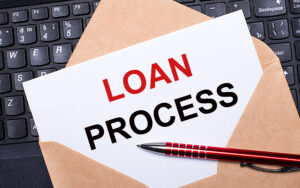
Loans can sound like a taboo word and it can well be if taken hastily or for the wrong reasons – much like how self-medicating, even with the best of intentions, can be harmful. However, there are many prudent, intelligent reasons that justify borrowing.
The advantages of a loan secured by property or other collateral
Secured lending comes with lower interest rates or better terms compared to unsecured lending. The logic is simple, if the mechanics are anything but. Evaluating risk is at the heart of what a banker does, regardless of whether he is providing financing advice or extending facilities to customers. Accurately assessing the risk profile of its clients and astutely managing that risk is what the banking industry is built on.
An unsecured loan is riskier because a banker or financial institution can only depend on a borrower’s creditworthiness to evaluate whether a loan would be paid back on time, in accordance with the contracted terms. In case of a failure to satisfy one’s repayment obligations, the bank has fewer options available for recourse. The bank does not automatically have a right over any of the borrower’s property and instead has to first commence legal proceedings in order to obtain a writ of seizure, that would allow a bailiff to make lawful claims on personal property of any value. This would then be liquidated and go towards restitution of the defaulted loans. In the worst case scenario, non performing loans would be declared bad debts and written off, after the proper accounting rules have been followed. Although banks would prefer any and all loans to be guaranteed by an asset, the relatively smaller amounts usually do not warrant it or in the case of student loans, the lender might have few assets worth pledging.
In contrast, secured loans are much less risky because the lender has a lien on specific assets linked contractually to the loan. This gives the lender a legal right to seize the pledged property in lieu of payments. With this privilege, banks are able to extend better loan terms. Apart from lower interest rates, late penalties might also be more forgiving where there could be longer grace periods and smaller late fees. Typically, secured loans are also easier to obtain, and could be approved for larger principle sums.
Common Types of Secured Loans
Secured loans are commonplace, to the point that it is often unnoticed. Often, the most significant ones encountered by most of us are the auto loan and property mortgage. This means that the bank can repossess the vehicle or foreclose on the property when sufficient time has lapsed and a certain predetermined number of payments have been missed. For businesses, instruments such as letters of credit, standby letters of credit facilitate act as form of surety between merchants and suppliers, and thereby providing a form of short term loan. On a smaller scale individuals might be familiar with pawnshop loans and payday loans. With the former, personal property such as jewellery or other expensive effects are kept with the pawnbroker and returned only when the loan is repaid. Payday loans, as the name suggests, pledges an individual’s future income in return for a loan upfront. These are offered here by licensed money lenders and the process could be as simple as writing a post dated cheque. To investors, margin trading is yet another example of the many forms of secured lending in everyday life. In this case, an investor sets up a trading account with a brokerage firm and uses leverage to multiply an investment. However, if the markets turn on the investor, the brokerage can liquidate the account to recover the loan amount.
Quality of Collateral
Just as there seems to be a hierarchy in the type and assortment of loans, so too collateral varies in preference. When valuing an asset to be pledged, four factors are considered: condition, liquidation value, ease of liquidation, and nature of the asset. The first condition takes into account depreciation of physical assets and its remaining value. The next two consider its market value, cost of liquidation and efforts needed to dispose of the asset. The final point takes note of the type of asset and its scale.
With these guidelines, two methods for valuing collateral are employed. One of them is to compare it to similar assets with established monetary values as a proxy. The other is to consult with a qualified assessor with strong knowledge of the asset type.
Through these studies over time, a correlation between quality of collateral and quality of borrower had been determined. It was found that individuals and companies that could provide strong collateral were also more likely to honour repayment terms and had a lower probability of defaulting. Additionally, a link was also found between those with high quality assets to pledge and a higher degree of prudence in the use of loan funds. All these factors point toward a lower risk profile.
In short, high quality assets mitigate are of suitable value relative to the loan amount and are easily liquidated – all of which reduces the risk to the lender. Cash, as always, is king. Cash in bank accounts make the best collateral. Of equal quality are near-cash assets such as certificates of deposit, foreign currency, securities, bonds and other similar instruments. Next in line are high value tangible assets like property, vehicles, precious metals and jewels. At the other end of the spectrum, increasing willingness to expand the pool of clientele has prompted institutions to accept less conventional forms as collateral. These can range from expensive equipment like golf clubs and electronics to exotic items such as art and wine collections or medical instruments.
Just like the lenders that assess risk before extending a loan offer, the borrower also has to evaluate risks involved in accepting. However, if it is managed properly both parties can reach a win-win situation.




